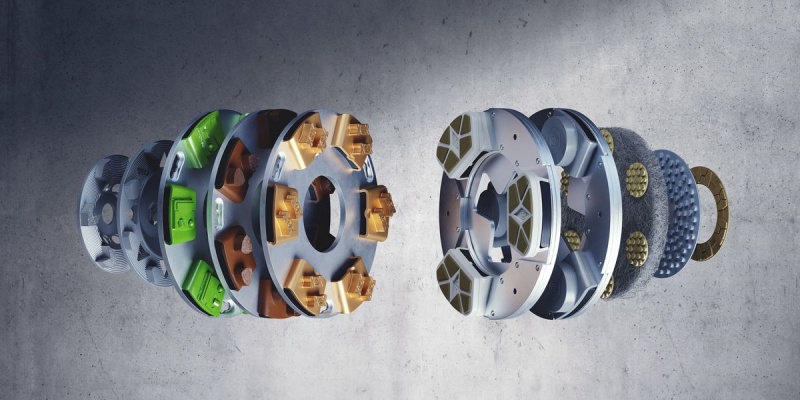Precision engineering demands exceptional accuracy, and the tools utilized are essential for achieving the desired outcomes. Among these tools, TransGrind diamond grinding tools are highly regarded for their effectiveness with materials. Choosing the right tools requires careful consideration to ensure they fulfill the specific needs of the application. Key factors include the type of diamond, bond type, grit size, concentration, and wheel shape.
The type of diamond in the grinding tool is an important factor. Diamonds can be natural or synthetic, each with unique characteristics. Synthetic diamonds are generally favored for precision engineering due to their uniform quality and customizable properties, which can be adapted for specific uses. The decision between PCD and MCD depends on the material being processed. PCD coating removal tools are typically used the rough grinding phase or when quick material removal is needed during floor renovation or repair, while MCD tools are typically used in the polishing or final finishing stages of floor grinding, particularly on stone or other hard materials that require a high-gloss finish.
The bond type that secures the diamonds is another ley consideration. Metal bonds are recognized for their durability and are ideal for high-precision grinding tasks that require a long tool lifespan. In contrast, resin bond polishing tools facilitate a higher material removal rate and are appropriate for applications needing a finer finish. Hybrid bonds grinding tool merges the advantages of both metal and resin, offering a compromise between durability and finish quality. The choice of bond type should correspond with the specific machining needs and the desired surface finish.

Grit size is also a vital factor in selecting diamond grinding tools. It influences the surface finish and material removal rate. Coarse grits are used for quick material removal, while finer grits are necessary for achieving smoother finishes. In precision engineering. Where surface finish is often critical, choosing the right grit size is essential for balancing efficiency and quality.
The concentration of diamonds within the grinding tool significantly affects performance as well. Higher diamond concentrations lead to longer tool life and finer finishes but may decrease the material removal rate. Conversely, lower concentrations can enhance cutting speed but may cause the tool to wear out faster. The ideal concentration depends on the hardness of the material being machined and the specific task requirements.
Finally, the shape and size of the grinding wheel or tool should be chosen based on the geometry of the workpiece and the type of grinding operation. Complex shapes or tight tolerances may necessitate custom-designed tools to ensure precision and maintain the integrity of the material. Standard wheel shapes, such as flat or cup wheels, are commonly used for surface grinding, while more specialized shapes are required for intricate tasks.